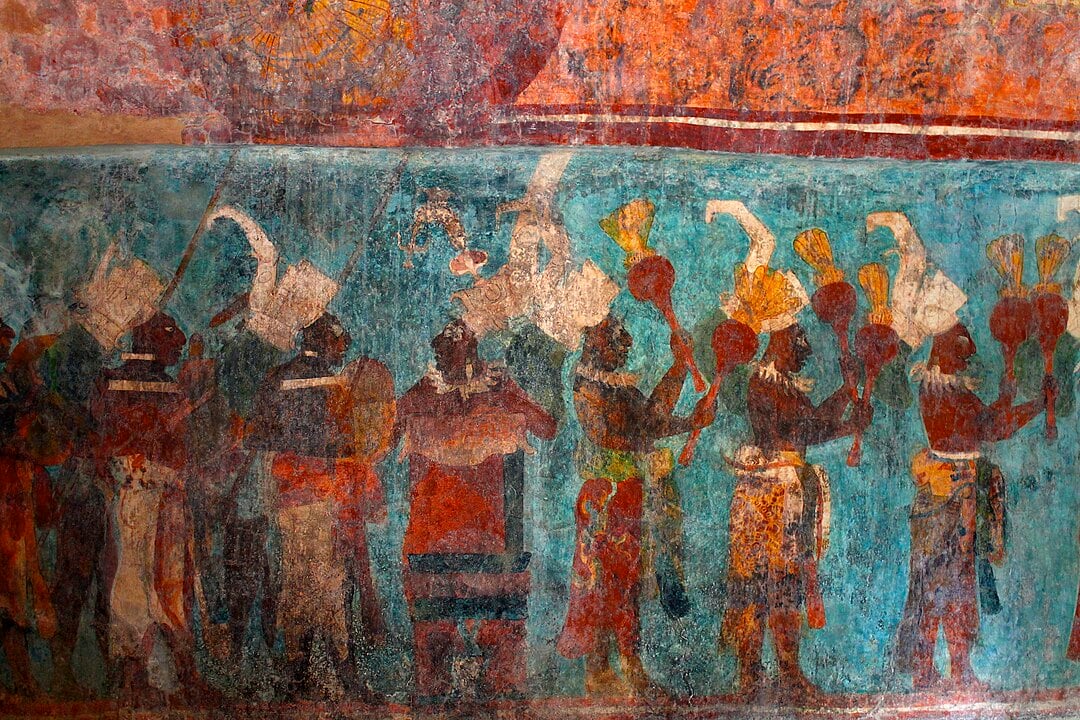

Researchers have uncovered a second method used by the ancient Maya to create Maya blue, a bright, sky-colored pigment that has baffled scientists for nearly a century.
Known for its remarkable resistance to time and weather, Maya blue was first identified by modern researchers in 1931. Used on pottery, murals, and during sacred ceremonies, the pigment has been found across Mayan sites in Mexico and Central America.
Its ability to remain vibrant despite centuries spent in hot, humid conditions make it one of the most mysterious achievements of Maya chemistry.
In 2008, researchers led by Dean Arnold, an anthropologist and curator at the Field Museum in Chicago, found the first breakthrough.
By examining pigment traces on pottery recovered from a well at Chichén Itzá, Arnold concluded that the Maya heated a mixture of plant-based indigo dye, a clay called palygorskite, and copal—a tree resin used as incense—to produce the color.
But Arnold’s latest findings, presented at the annual Society for American Archaeology meeting in Denver on April 25, suggest that the Maya had more than one method. His research, detailed in the 2024 book Maya Blue (University Press of Colorado), points to a second process based on clues found in 12 ceramic bowls also excavated at Chichén Itzá.
Arnold noticed white residue inside the bowls, likely left behind by wet-ground clay. Small cracks caused by grinding tools had trapped the fine particles. Microscopic analysis revealed charred bits of plant stems and signs that the bowls had been heated from below.
Ancient Mayan Chemistry “Maya Blue”
Maya Blue is a remarkable pigment used by the ancient Maya, known for its vibrant hue and incredible durability. It is a hybrid of organic indigo dye and the inorganic clay mineral palygorskite, which together create a stable compound… pic.twitter.com/4zI2Opipxg
— Ancient Hypotheses (@AncientEpoch) May 6, 2025
Together, these details suggest the Maya used local materials, basic tools, and fire to produce the long-lasting pigment.
“Consequently, the observations of these bowls provide evidence that the ancient Maya used this method as a second way to create Maya blue,” Arnold said during his presentation. The evidence is clear in the wear and heat patterns of these bowls.
According to Arnold, Maya blue held deep cultural significance, especially in ceremonies linked to the rain god Chaak. He believes the pigment may have represented the deity himself when heated inside ceremonial bowls.
“This is a genius discovery that they made, and apparently the knowledge of it was limited to specialists like priests,” Arnold said.
Though much has been learned, the full formula remains unsolved. Arnold plans to conduct further analysis of the burned plant remains to identify the exact species used in the dye.
As new layers of this ancient practice come to light, scientists continue to admire the ingenuity of the Maya. Their legacy, reflected in a brilliant blue that has stood the test of time, continues to inspire discovery.
